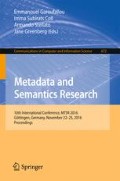Abstract
Teaching procedural skills is relevant for a broad range of applications, from IT administration to automotive repair to medical diagnostics. Virtual learning environments reduce the cost, time, and risk, and increase the availability of such training. We introduce ontologies and rules to characterize the objects in the learning environment, and the actions that the user can perform on them. These semantic models are used as the basis for automated reasoning about a student’s actions and their effects, and guide automated assessment and feedback to the student. We describe our system and models in the context of weapon skills such as disassembling and assembling a rifle.
Access this chapter
Tax calculation will be finalised at checkout
Purchases are for personal use only
Notes
- 1.
- 2.
- 3.
- 4.
- 5.
In OWL, one might instead use qualified cardinality restrictions. Other ways of modeling also exist in Flora.
References
Soldier’s manual of common tasks - warrior skills level 1. Technical report, Headquarters Department of the Army, September 2012
Ford, R., Denker, G., Elenius, D., Moore, W., Abi-Lahoud, E.: Automating financial regulatory compliance using ontology+rules and Sunflower. In: Proceedings of SEMANTICS (2016). (to appear)
Greuel, C., Myers, K.: Assessment and content authoring in semantically enabled virtual environments. In: Proceedings of Interservice/Industry Training, Simulation and Education Conference (2016). (submitted)
Kessing, J., Tutenel, T., Bidarra, R.: Designing semantic game worlds. In: Proceedings of the The Third Workshop on Procedural Content Generation in Games, PCG 2012, ACM, New York, NY, USA (2012). http://doi.acm.org/10.1145/2538528.2538530
Maderer, J., Gütl, C., AL-Smadi, M.: Formative assessment in immersive environments: a semantic approach to automated evaluation of user behavior in open wonderland. In: Proceedings of Immersive Education (iED) Summit, June 2013
Myers, K., Gervasio, M.: Solution authoring via demonstration and annotation: an empirical study. In: Proceedings of International Conference on Advanced Learning Technologies (2016). (submitted)
Nau, D., Ghallab, M., Traverso, P.: Automated Planning: Theory & Practice. Morgan Kaufmann Publishers Inc., San Francisco (2004)
Riehemann, S., Elenius, D.: Ontological analysis of terrain data. In: Liao, L. (ed.) ACM International Conference Proceeding Series on COM.Geo, p. 10. ACM (2011)
Vujosevic, R., Ianni, J.: A taxonomy of motion models for simulation and analysis of maintenance tasks. Technical report, United States Air Force Armstrong Laboratory, January 1997
Acknowledgements
This material is based upon work supported by the United States Government under Contract No. W911QY-14-C-0023. Any opinions, findings and conclusions or recommendations expressed in this material are those of the authors and do not necessarily reflect the views of the Government. Development of the Sunflower IDE was funded in part by the U.S. Office of the Assistant Secretary of Defense for Readiness under the Open Netcentric Interoperability for Training and Testing (ONISTT) project, and by TRMC (Test Resource Management Center) T&E/S&T (Test and Evaluation/Science and Technology) Program under the NST Test Technology Area. We are also indebted to the research community for developing and maintaining the open source language and software components on which Sunflower depends, especially Flora-2 (a.k.a. Ergo Lite), XSB Prolog, and InterProlog.
Author information
Authors and Affiliations
Corresponding author
Editor information
Editors and Affiliations
Rights and permissions
Copyright information
© 2016 Springer International Publishing AG
About this paper
Cite this paper
Elenius, D., Denker, G., Kim, M. (2016). Semantically Enhanced Virtual Learning Environments Using Sunflower. In: Garoufallou, E., Subirats Coll, I., Stellato, A., Greenberg, J. (eds) Metadata and Semantics Research. MTSR 2016. Communications in Computer and Information Science, vol 672. Springer, Cham. https://doi.org/10.1007/978-3-319-49157-8_7
Download citation
DOI: https://doi.org/10.1007/978-3-319-49157-8_7
Published:
Publisher Name: Springer, Cham
Print ISBN: 978-3-319-49156-1
Online ISBN: 978-3-319-49157-8
eBook Packages: Computer ScienceComputer Science (R0)

